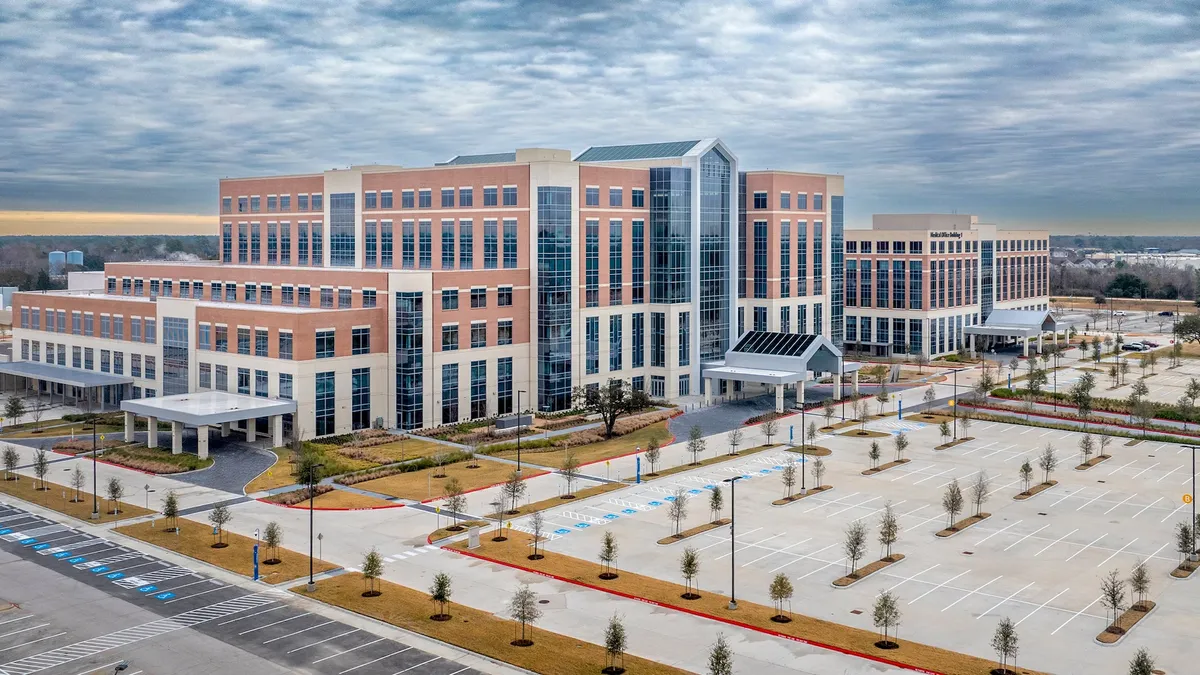In Portland, Oregon, 115 degrees is not normal.
Late last month, however, the Pacific Northwest saw the temperature skyrocket and break multiple records. The thermometer soared to 115 in Portland and 108 in Seattle. The heatwave caused up to 100 deaths in Oregon, USA Today reported. The usual regional temperature in June is in the high 80s.
For outdoor construction work, the heat posed an unusual challenge in the region. The summer months provide more sunlight, which allow for longer work days, but with that comes risks of heatstroke and other heat-related illnesses.
Even though it was a record-setting month, it was not the first time the region had experienced heat strong enough to pose a serious health threat, Max Gottfried, environmental health and safety manager at Rosendin Electric, told Construction Dive. Thus, teams were equipped with the usual tools and practices to keep workers safe.
During the heatwave, San Jose, California-based Rosendin worked on a number of commercial projects in Oregon, including data centers, healthcare facilities and education projects, Gottfried said.
Techniques to protect workers that Rosendin used included:
- Pop-up tents and cooling stations installed on site.
- Moving work inside during times of extreme heat.
- Creating work and rest cycles so no worker was in the heat for too long.
- Providing electrolyte packs and popsicles to maintain worker hydration.
Western Specialty Contractors — one of the country's largest specialty contractors in masonry, concrete restoration, waterproofing and specialty roofing — has a training program for employees enforcing similar practices. The St. Louis-based contractor advises workers to wear light-colored and loose-fitting clothing, UV sunglasses and plenty of sunscreen.
Beating the heat
The message of OSHA's Heat Illness Prevention campaign is usually distilled down to the basics: "Water, rest, shade." The agency suggests providing workers with hydration, giving them time to acclimate to working in the increasing heat, planning for emergencies and monitoring workers for the signs of illness.
In addition to giving workers the chance to build up to heavy work and get acclimated to the summer, teams should focus on the hardest construction tasks during the coolest part of the day, according to Cameron Samuel, assistant safety director at Western Specialty Contractors.
Part of why educating workers about heat illness is key, Gottfried said, is that workers often don't notice the symptoms when they experience them.
"It is usually a crew member who recognizes the signs and symptoms of someone suffering from heat illness first," Gottfried said. For that reason, Gottfried was concerned about equipment operators, who are often alone for long periods of time.
Because equipment operators are unable to work with a buddy, during the recent heatwave Rosendin created a task rotation schedule to swap operators for two hours at a time, at which point a worker could cool off inside one of the buildings.
Western Specialty Contractors advises workers to drink water frequently enough that they never become thirsty and to avoid caffeinated beverages, Samuel said in a press release. Diet matters as well, as junk food can be high in preservatives and increase the load on the digestive system. Eating a bigger breakfast and light lunches of fruits and vegetables is also advised.
Challenges
Hot weather safety can be a challenge in any region, especially in traditionally cooler areas like the Pacific Northwest.
"It is more difficult to protect workers in regions not used to extreme heat spikes, especially when they occur early in the summer season," Gottfried said. Especially early in the summer, crews are not used to the heat, which means their tolerance is low and they are more susceptible to heat illness.
Real estate company JLL has over 150 projects underway in the Pacific Northwest, mostly involving building improvements, campus work and retail, said Carmen Van Liere, Seattle vice president of project and development services. The challenges that arose during the recent spate of hot weather went beyond worker safety, she told Construction Dive.
In addition to the heat on site, the region suffered from a lack of childcare, as some daycare facilities and summer schools shut down from inadequate or malfunctioning air conditioning. Some workers stayed home during the worst days, and the region experienced a shortage of critical supplies and equipment, like portable fans, AC units, water bottles and tents, Van Liere said.
The future
In any season, extreme weather events such as heat waves and damaging storms are becoming more frequent, according to the Environmental Protection Agency. Just four months before the massive heat wave struck the Pacific Northwest, the Midwest experienced a cold snap that put a strain on power grids in states like Texas.
Construction crews battle the elements daily, and with intense weather events increasing in frequency, it's vital workers and their employers know what to look for.
"I'll say it once again: water, rest, shade," Gottfried said.























